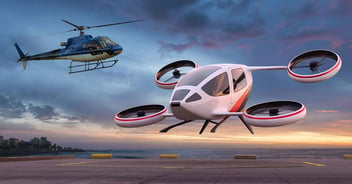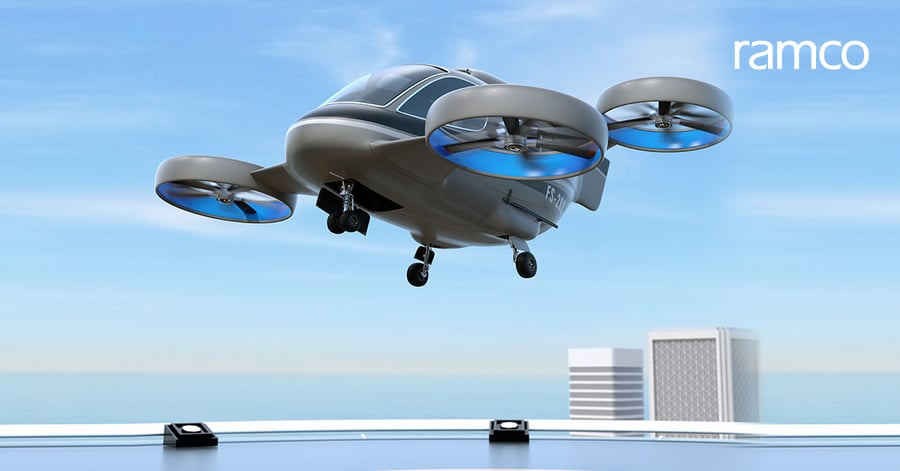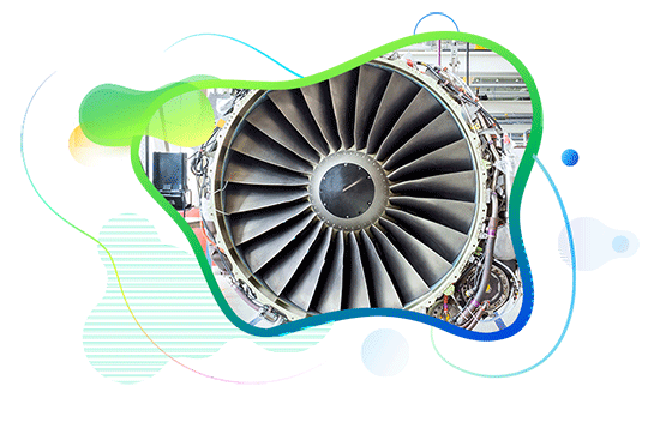
eVTOLs and UAVs: The role of ERP in this emerging industry
Published :

The technology used for the air mobility market is certainly growing in leaps and bounds, with innovations being tested each passing day. What was once a far-fetched fantasy, is rapidly turning into reality. Electric vertical take-off and landing vehicles (eVTOLs), and drones/ Unmanned Aerial Vehicles (UAVs) are either already in the market or are on their way to being viable for the public. Such vehicles have the potential to alter the global air traffic environment. For small aviation transport to be useful and manoeuvrable, vertical take-off is essential.
Innovation continues to take place in this area despite companies being several years in unmanned space. From a technology perspective, ERP software stands in the centre of rapid development in the eVTOL and UAV space. The regulatory environment is getting tighter, and the industry shows a combination of innovation and maturity. At the same time, attention on the UAV is shifting from the conventional bomb-dropping vehicle to the technology behind it.
What is eVTOL?
The eVTOL does not roll down a runway like an airplane. Instead, it takes off from the same place and is powered by electricity. These vehicles are ideal for various purposes like air taxis, cargo and so on. Passengers can expect eVTOL vehicles to be substantially quicker and convenient due to their three-dimensional skies mobility.
What are UAVs?
UAs or Unmanned Aerial Vehicles (drones) do not require pilots to fly them. Systems for UAVs include the aircraft, sensor payloads, and a ground control station. UAVs are often deployed for tactical planning and observation. UAVs are categorized according to their altitude range, endurance, and weight, and they can be used for both military and commercial purposes.
How big is the eVTOL market?
According to a study by Markets and Markets, the global market for eVTOL aircraft is estimated to be USD 8.5 billion in 2021 and is projected to reach USD 30.8 billion by 2030, at a CAGR of 15.3% during the forecast period.
Evolution from simple software to ERP
The vertical mobility industry is growing while still experiencing innovations in different forms. One of the latest ideas in the industry is that rather than a bomb-dropping drone that looks ‘cool’, it’s the system behind the vehicle’s design that attracts attention. A lot of attention is being given to new technology and innovations such as Lift Technology (Vectored Thrust, Multirotor, Lift plus Cruise), Propulsion Type (Fully Electric, Hybrid Electric, Hydrogen Electric), System, Range, Mode of Operation and Application.
ERP as a differentiator for the UAV and eVTOL industry
Reliability drives success, and that is why safety innovations are also necessary. The accuracy of data acquisition is also another area to look at. To make UAVs and eVTOLs operate successfully, it is necessary to build supportive platforms and for this, ERP software is necessary. ERP helps develop a supportive ecosystem that will be reliable and can show the data to prove it. ERP at Ramco covers a wide range of functions in aviation, ranging from manufacturing, supply chain, flight operations, maintenance, customer and contract management, finance, and reporting.
Movement towards an innovative ecosystem
The industry relies on the use of technology for accurate predictive data to drive key decisions. IT in the aviation industry has historically consisted of siloed processes that were unable to provide real time information due to lack of integration and coherence. UAV/ eVTOL Industry has the unique opportunity to overcome these issues by taking a clean slate approach and looking at the ecosystem holistically.
A company such as Ramco can fill the gaps between IT and aviation by providing actionable, real time and accurate data. Such an ERP can be used to pitch to investors, giving them the confidence of being able to support customers over long terms. These days, companies advertise how well they’re able to provide predictive data, which can only happen when maintainability, reliability, and data acquisition are integrated into ERP. As a result of the ERP, data acquisition becomes part of the Supply Chain system as well.
Trends seen in the UAV/eVTOL industry
Data management has become easier by leveraging Artificial Intelligence and machine learning. Technology departments leverage behavioural analysis and prediction to simplify data entry and train the model to arrive at intelligent predictions.
Challenges for eVTOL industry
The key obstacles in the eVTOL service market are:
Conclusion
There has never been a better opportunity for entrepreneurs and R&D teams to enter the race to develop more sustainable, innovative solutions. ERP solutions are hugely beneficial for monitoring and accessing data with respect to eVTOLs.

All Rights Reserved. © Copyright 2024. Ramco Systems.